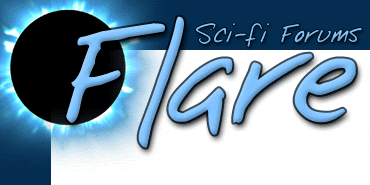3 : one
4 : one
5 : one
7 : one
9 : one
Two gaps, remaining: [[0, 1, 2]], [[6, 8]].~ : two
@ : one
# : one
$ : four
% : one
^ : one
& : one
* : one
= : one
+ : one
Two gaps, remaining: [[!]], [[(, ), _]].
A : two
B : one
F : one
H : two
I : one
K : one
N : one
W : two
Y : two
Z : three
Six gaps, remaining: [[C, D, E]], [[G]], [[J]], [[L, M]], [[O, P, Q, R, S, T, U, V]], [[X]].
Ten letters from the alphabet are used, as well as five out of ten numbers, and 10 out of 13 shifted characters. Total = 25: this could mean the encrypter swapped around certain letters for numbers, and certain other letters for shifted numbers.
So, our little mistery sentence contains nine words in total... we also know there has to be a logical system behind the code... a pattern that will reveal how to translate the message (if, on the other hand, all characters were randomly chosen, it might take a *VERY* long time to find one possible solution).
The problem lies here: where should we start? Usually in these sorts of puzzles, once you've figured out a single letter, the rest follows easily. But in this case, it's hard to form a frame of reference. Thus, we need to resort to a little trial and error, as well as a bit of old-fashioned logic (assuming the sentence is grammatically correct).
Notice the recurring combination 'ZWY'. Three letters... which English noun or verb could it represent? 'and', 'the', 'can', 'you'... endless possibilities: the 'Z' is the 26th, the 'W' is the 23d, and the 'Y' the 25th letter in the alphabet (all located fairly close to eachother!): from this, we can deduct that the corresponding "real" letters must be similarly closely grouped. This excludes 'and', 'the', 'can', 'you'... we must find alternatives, specifically, a word in which the first letter is one alphabetical step higher than the third, and the second three steps lower than the first. We could try to brute-force this:
aXX, bXa, cXb, dac, ebd, fce, gdf, heg, ifh, jgi, khj, lik, mjl, nkm, oln, pmo, qnp, roq, spr, tqs, urt, vsu, wtv, xuw, yvx, zwy, Xxz, XyX, XzX, XXX.
...Which doesn't yield anything useful. This leads to the conclusion that the letters that constitute the combination were randomly picked. Annoying, but we aren't out of options yet. After all, we still have ' @$= ' and ' &$3 ' to mess around with! These both occur one single time, but they share the '$' character. It's likely to be a vowel, since it's placed in a central position. Also, all the shifted characters follow a pattern: '+' is the twelfth shifted characted counted from the left, while '@' is the third.
If '$' were 'a', then '@' would not exist. Keeping this in mind, let's go over the different values for '$':
@ = X : $ = a : '=' = i
@ = c : $ = e : '=' = m
@ = g : $ = i : '=' = q
@ = m : $ = o : '=' = w
@ = s : $ = u : '=' = X
...Which yields Xai, cem, giq, mow, suX. Again, no useful outcome. This leaves us with one final option: &$3. But there's a catch: it contains an unshifted number. We have no way to directly know in which sequence the code is supposed to go (or even IF there is a sequence at all!): "1, 2, 3... @, #, $..., A, B, F..." or "@, #, $..., A, B, F..., 1, 2, 3" or... there are six ways, and a LOT of possible interpretations. Trying to figure out each combination would be foolish (and consume more of my time than I can afford  )... we are left with one route of escape - discovering which letters have been swapped for numbers, and which for shifted numbers. But there is a caveat here too: some letters have been swapped themselves!
)... we are left with one route of escape - discovering which letters have been swapped for numbers, and which for shifted numbers. But there is a caveat here too: some letters have been swapped themselves!
[This is a work in progress...]





 Printer-friendly view of this topic
Printer-friendly view of this topic






 Printer-friendly view of this topic
Printer-friendly view of this topic